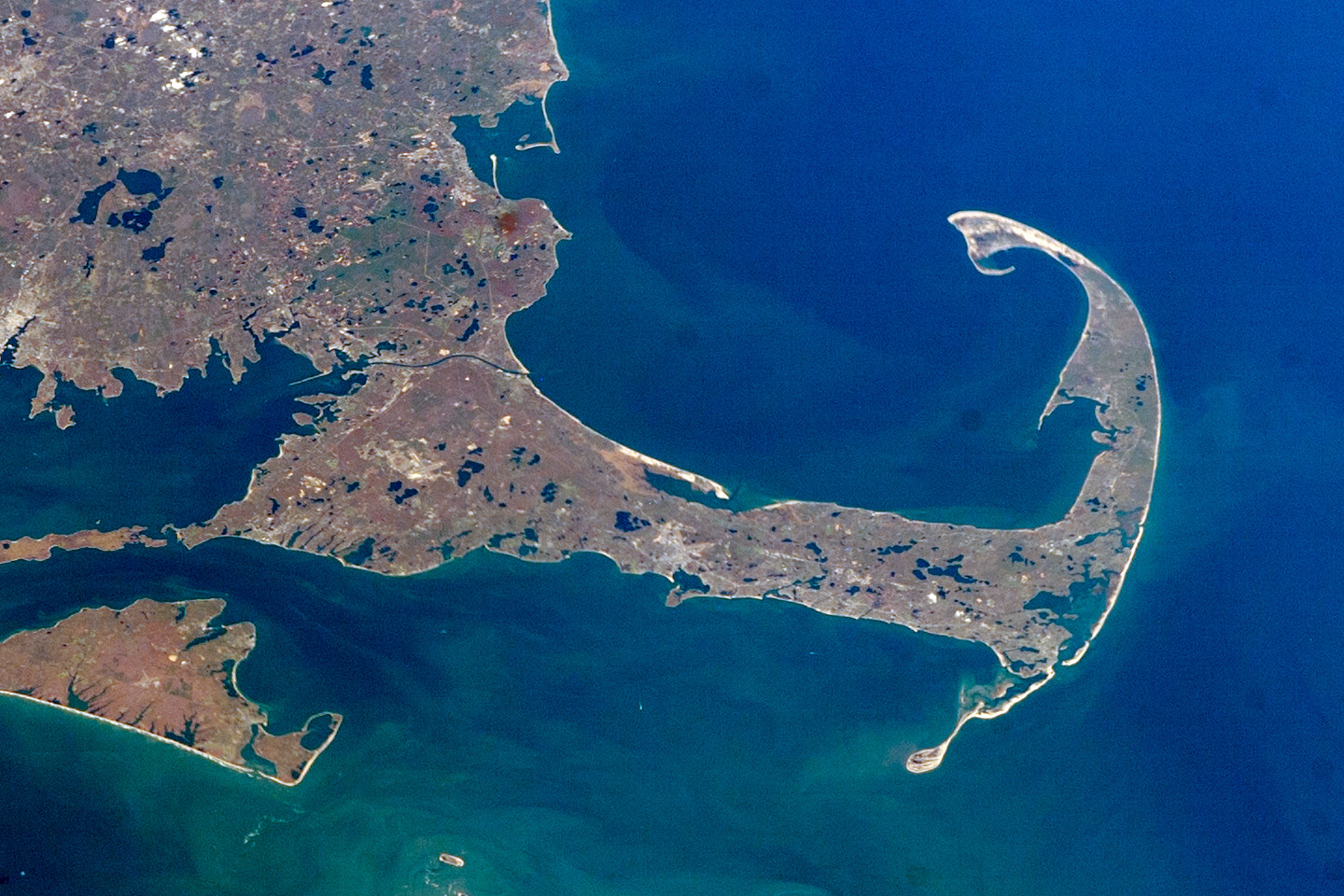[:ja]宇宙飛行士がISSから撮影した米マサチューセッツ州ケープコッドとプリマスです。

プリマスはメイフラワー号でこの地に上陸した清教徒、ピルグリム・ファーザーズが入植したマサチューセッツ最初の入植地です。現在では「アメリカの故郷」(America’s Hometown)と呼ばれ、人気の高い観光地となっています。1602年5月15日、ヨーロッパからパーソロミュー・ゴスノルドが上陸し、最初は島だと思っていたことからこの地を「ショール・ホープ」と呼びましたが、大量のタラを捕まえたことから、この地を「ケープ・コッド」と改名したとされています。その後、1620年11月9日にピルグリム・ファーザーズがメイフラワー号に乗ってバージニア植民地に向かう途中にケープ・コッドを見つけました。ピルグリムは湾の反対側のプリマスを植民地に考えていましたが、ケープ・コッドは椀状に深く、魚がよく採れ、この海岸が最適と考え直しました。
地上の様子はこちらです。


参考文献: Settling on the Coast (NASA Earth Observatory)
地球俯瞰画像を見る: LiVEARTH
[Earthview Wonders] No.908: Plymouth and Cape Cod🇺🇸
Astronaut on board ISS captured Plymouth and Cape Cod, U.S.

In 1620, the Pilgrim Fathers departed Plymouth for the New World and established Plymouth Colony, the second English settlement in what is now the United States of America. On November 9, 1620, the Pilgrims aboard the Mayflower sighted Cape Cod while en route to the Colony of Virginia. Though the Pilgrims chose to settle across the bay in Plymouth, Cape Cod enjoyed an early reputation for its valuable fishing grounds, and for its harbor: a naturally deep, protected basin that was considered the best along the coast. In 1654, the Governor of the Plymouth Colony purchased this land from the Chief of the Nausets, for a selling price of two brass kettles, six coats, 12 hoes, 12 axes, 12 knives and a box.
The local scenery on the ground is as follows.


Reference: Settling on the Coast (NASA Earth Observatory)
See earthview photo gallery: LiVEARTH[:en][Earthview Wonders] No.908: Plymouth and Cape Cod🇺🇸
Astronaut on board ISS captured Plymouth and Cape Cod, U.S.

In 1620, the Pilgrim Fathers departed Plymouth for the New World and established Plymouth Colony, the second English settlement in what is now the United States of America. On November 9, 1620, the Pilgrims aboard the Mayflower sighted Cape Cod while en route to the Colony of Virginia. Though the Pilgrims chose to settle across the bay in Plymouth, Cape Cod enjoyed an early reputation for its valuable fishing grounds, and for its harbor: a naturally deep, protected basin that was considered the best along the coast. In 1654, the Governor of the Plymouth Colony purchased this land from the Chief of the Nausets, for a selling price of two brass kettles, six coats, 12 hoes, 12 axes, 12 knives and a box.[8]
The local scenery on the ground is as follows.


Reference: Settling on the Coast (NASA Earth Observatory)
See earthview photo gallery: LiVEARTH[:]